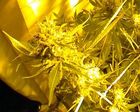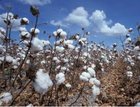our philosophy of organic fair trade wear
Do people have to suffer, just because we want to buy cheap clothes?
What price do others pay for our consumption and how does production affect our environment?
Vor 18 years ago, we asked ourselves these questions and created fairtragen. Because it is important to us to be able to buy clothes that have not been produced under exploitative conditions and that destroy habitats.
To the best of our knowledge and belief, we therefore make a pre-selection of textiles and manufacturers that reflect our values and stand for a sustainable production:
All these points we always keep in mind, because it is important to us to feel a clear conscience also on the skin!
Vor 18 years ago, we asked ourselves these questions and created fairtragen. Because it is important to us to be able to buy clothes that have not been produced under exploitative conditions and that destroy habitats.
To the best of our knowledge and belief, we therefore make a pre-selection of textiles and manufacturers that reflect our values and stand for a sustainable production:
Organic farming
The organically grown fibre is free of pollutants, which is good for the environment, the cotton pickers and our skin.-
Environmentally friendly processing
The clothing will not receive treatments such as bleaching with chlorine or dyeing with azo dyes. The environment, the employees and the end users are happy about this. -
Compliance with social standards
The working conditions of the workers in the textile industry are improved by social standards, such as a fair minimum wage, no child labour and the right of workers to the formation of trade unions. -
Quality and functionality
So that you can enjoy our clothing, quality and functionality are also an important criteria that we pay attention to in purchasing. How the material feels, how it is processed and cut, are all aspects that also lead to sustainable fashion and reduce the waste of precious resources.
All these points we always keep in mind, because it is important to us to feel a clear conscience also on the skin!
further information to organic farming and fair trade
Are organic and fairtrade the same thing, or at least similar?What is the exact meaning of fair trade?
What is the meaning of "conventional" farming ?
What is the meaning of "organic" farming ?
Why organic farming ?
Which labels stand for a sustainable production?
information about hemp
information about cotton
Why is organic clothing so smooth?
What is organic leather?
Do you have an overview of the manufacturers?
Is organic and fair trade the same, or at least similar?
No, organic farming and fair trade are not the same.Nevertheless, both aspects are very important to the people who produce our clothes.
In organic cultivation, the health of the workers is not endangered by the use of chemicals. And under fair trade conditions, workers are rewarded fairly and appropriately for their work.
What does fair trade mean exactly?
There is no secret about it: The people in developing countries not only produce our coffee but often our clothes working under barbarous conditions.Improvements of the situation of the workers are still very little because large producers of clothing and sporting goods continue to engage so-called "sweatshops". There the workers are exploited under the most abject conditions. This cannot work out, as you can see playing this little game.
"Fair trade" means not only to pay a fair price to workers. It is about a completely different kind of trade. The aim of fair trade is not to earn greater profits at any cost, but to help the people countries where life is not as easy and enjoyable as it is here. It is about giving people an opportunity to establish a sustainable economy.
Once we see economy under this aspect, we can achieve major changes.
More precisely, fair trade means for us at fairtragen: - No forced labor
- No exploitation
- Staff is allowed to corporate, for example in unions
- tolerable working hours, payment for overtime
- No discrimination
- Fair wages are paid
- No punishments
- No exploiting child labor
- Payment during illness
Many of our partner retailers support the people also in further issues. More information is available on the websites of our manufacturers.
General information about hemp
Hemp is a very robust plant and can be grown almost anywhere in the world. The plant has a broad range of uses, for example in pharmacological products, drugs, ropes, fabrics, paper, peat substitute, edible oil or cosmetics.Clothing made from hemp has the advantage that it has a pleasant cooling effect in summer and a warming effect in winter.
Cultivation of hemp
Since hemp is very resistant against pests, no insecticides are needed for cultivation. Also, weed killers (herbicides) are unnecessary because the plants completely shade the ground after a few days so that no weed can grow. This minimizes the impact on the environment.The roots of the hemp plants can grow into the ground up to 140 cm if the soil conditions allow it. This rooting depth is much higher than that of other crops, thus, hemp was formerly often planted on drained, hardened acres to loosen the soil.
Where appropriate, hemp cultivation may provide soil conditions for more demanding plants such as cereals that are grown later.
Hemp has also been used in eroded areas, not only to loosen the soil but to shield the ground from the sun. When soil conditions have been improved, other crops can be sown.
General information on cotton
For millennia, cotton has been in used for textiles. It is by far the most important raw material in the textile industry; cotton is also called "the white gold".The material is highly absorbent, ideal for garments that are worn on your skin such as underwear, nightwear, bathrobes, leisure suits and baby rompers. Cotton regulates the body temperature and does not irritate the skin or cause allergies. Therefore, it is particularly suitable for babies and toddlers, as well as for people with very sensitive skin.
Cotton cultivation
Cotton cannot be planted in every region. During the germination and growth period, the cotton plants need a temperature of at least 15 degrees Celsius; and about 150 to 180 days per year must be free of frost.Nowadays, the main areas for cotton cultivation are China, India, Pakistan and the CIS states.
What does "conventional cultivation" stand for?
- contaminates water, air and soil- endangers the safety of the cotton farmers
- destroys flora and fauna
Conventionally grown cotton is one of the most pesticide-treated crops. Irrigation, use of pesticides, defoliants, insecticides and other environmental toxins leads to massive environmental damage and the depletion of natural resources.
In addition, the high use of these chemicals will cost a lot of cotton workers their health or even their lives. The chemicals also contaminate the groundwater resulting in a lack of drinking water in the surrounding area. This situation of the local population is aggravated by the fact that dispersed insecticides, fertilizers and wilting agents cause diseases in humans.
Cotton plants place high demands on soil quality. Due to the intensive use (and fertilization), the soil is drained and unproductive after a few years of conventional cotton cultivation. Salination and erosion of the soil increasingly affect large areas of formerly fertile arable land and make the fields worthless.
What means "organic farming"?
- Natural farming- Avoid polluting substances
- Reduce water consumption
In the organic cultivation of cotton no pesticides, insecticides, and fertilizers are used. Every two or three years, there is a crop rotation. Fertilization takes place using only natural substances. For weed and pest control, exclusively biological methods are used. Defoliants are banned; the cotton is picked by hand. As a result, the ecological balance on the fields is ensured; soil, air and water are not contaminated with harmful substances, and the health of the cotton workers is not affected.
Naturally colored cotton
In the past, cotton used to grow in many different natural colors. Nowadays, most of these plant species are extinct. There is, however, cotton in green and brown shades in addition to the natural white cotton.At fairtragen the natural color cotton is found mainly in children's clothing. Naturally colored cotton has the advantage that the color cannot be washed out. In fact, the colors tend to become even stronger by washing.
Why organic farming?
Conventional cotton farming causes heavy pollution of the environment. An often-cited example illustrates the severity: Only about 2.5% of the total global agriculture area is used for cotton production. At the same time, 11% of the pesticides used worldwide and 25% of the world's insecticide consumption are spent on those areas. The toxic insecticides and pesticides are harmful to the people who work in the fields and the processing industries and they permanently damage the environment.The chemicals also lead to long term erosion of the soil. Once happened, the erosion is irreversible.
Furthermore, these chemicals pose a risk to the final customer since not all particles can be washed out of the cotton textiles and come into contact with the buyer’s skin.
The chemical residuals endanger anyone but especially those with sensitive skin such as babies and toddlers.
For the production of a conventional T-shirt, approximately a total of 150 g pesticides and insecticides are spent. In the production process of organic cotton, no chemicals are applied. Farmers benefit from organic farming methods because they don’t have to buy the expensive pesticides and insecticides whose consumption often drives the farmer families into debt.
In addition, the contamination of groundwater and drinking water with poisonous substances is prevented.
Furthermore, in organic farming, the cotton is planted on the fields alternating with other crops. This method ensures the supply with food for the local people.
Why has organic clothing such a soft texture?
This fact is a result of the mild harvesting method used in organic clothing manufacture.In conventional cotton farming, the cotton is often mechanically harvested. For this purpose, defoliants are sprayed onto the cotton plants in order to remove their leaves. Afterwards, the remaining buds are collected by a combine harvester. However, this machine is picking any bud, regardless of its ripeness or quality.
In contrast, in organic farming, cotton buds are collected by hand and no chemicals are needed in this method. Farmers / workers can control the quality of the buds while picking and thus only use proper, ripe buds.
For this reason, clothing made of organic cotton is so soft and pleasant to wear on your skin.
Can I get a summary of the partner manufacturers?
Sure! Here you can find a full register and further information about our manufacturers.What means eco-leather?
Leather has been used by humans for hundreds of years for clothing and other purposes.Initially, the leather was protected against rotting only by drying of the fresh hides in the air or by the fire. Progressively, new methods have been invented leading to various negative effects on the environment.
The most important difference of environmental sustainable produced leather (eco or bio leather) to conventionally produced leather is a tanning process without the use of the chrome, a substance that is highly toxic to humans and the environment.
Tanning
The tanning of hides into leather is carried out by the use of a mixture of sodium bicarbonate (known as baking agent, baking powder) and extracts from different plant species (such as Tara, Valonea, and rhubarb).




